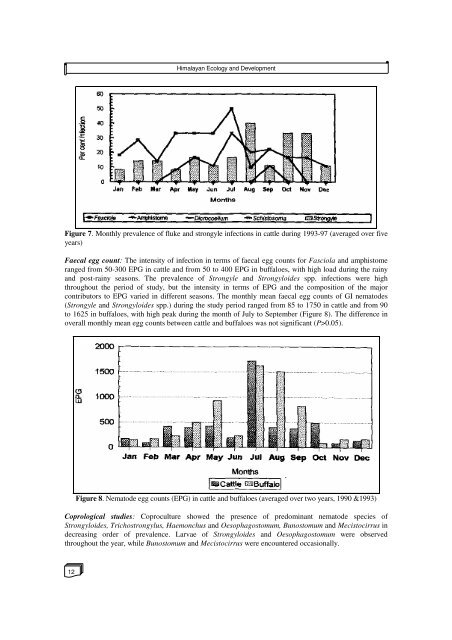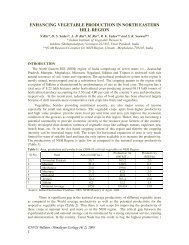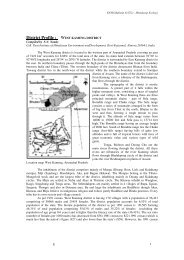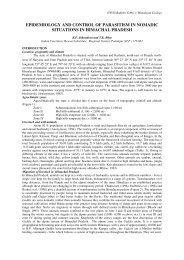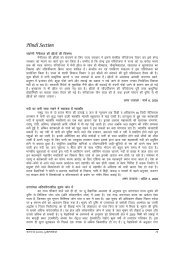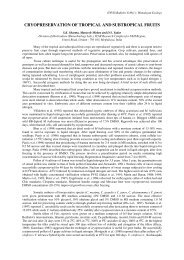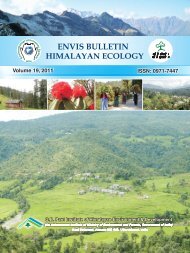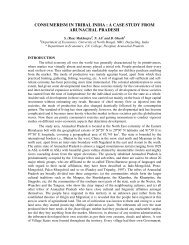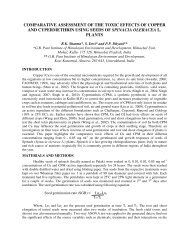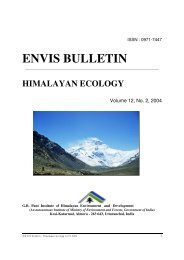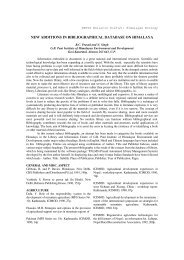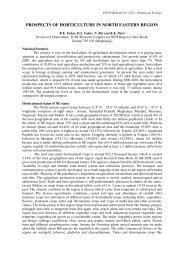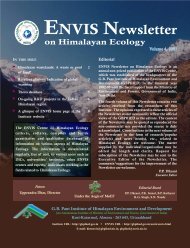Complete PDF - ENVIS Centre on Himalayan Ecology
Complete PDF - ENVIS Centre on Himalayan Ecology
Complete PDF - ENVIS Centre on Himalayan Ecology
Create successful ePaper yourself
Turn your PDF publications into a flip-book with our unique Google optimized e-Paper software.
<strong>Himalayan</strong> <strong>Ecology</strong> and Development<br />
Figure 7. M<strong>on</strong>thly prevalence of fluke and str<strong>on</strong>gyle infecti<strong>on</strong>s in cattle during 1993-97 (averaged over five<br />
years)<br />
Faecal egg count: The intensity of infecti<strong>on</strong> in terms of faecal egg counts for Fasciola and amphistome<br />
ranged from 50-300 EPG in cattle and from 50 to 400 EPG in buffaloes, with high load during the rainy<br />
and post-rainy seas<strong>on</strong>s. The prevalence of Str<strong>on</strong>gyle and Str<strong>on</strong>gyloides spp. infecti<strong>on</strong>s were high<br />
throughout the period of study, but the intensity in terms of EPG and the compositi<strong>on</strong> of the major<br />
c<strong>on</strong>tributors to EPG varied in different seas<strong>on</strong>s. The m<strong>on</strong>thly mean faecal egg counts of GI nematodes<br />
(Str<strong>on</strong>gyle and Str<strong>on</strong>gyloides spp.) during the study period ranged from 85 to 1750 in cattle and from 90<br />
to 1625 in buffaloes, with high peak during the m<strong>on</strong>th of July to September (Figure 8). The difference in<br />
overall m<strong>on</strong>thly mean egg counts between cattle and buffaloes was not significant (P>0.05).<br />
Figure 8. Nematode egg counts (EPG) in cattle and buffaloes (averaged over two years, 1990 &1993)<br />
Coprological studies: Coproculture showed the presence of predominant nematode species of<br />
Str<strong>on</strong>gyloides, Trichostr<strong>on</strong>gylus, Haem<strong>on</strong>chus and Oesophagostomum, Bunostomum and Mecistocirrus in<br />
decreasing order of prevalence. Larvae of Str<strong>on</strong>gyloides and Oesophagostomum were observed<br />
throughout the year, while Bunostomum and Mecistocirrus were encountered occasi<strong>on</strong>ally.<br />
12


